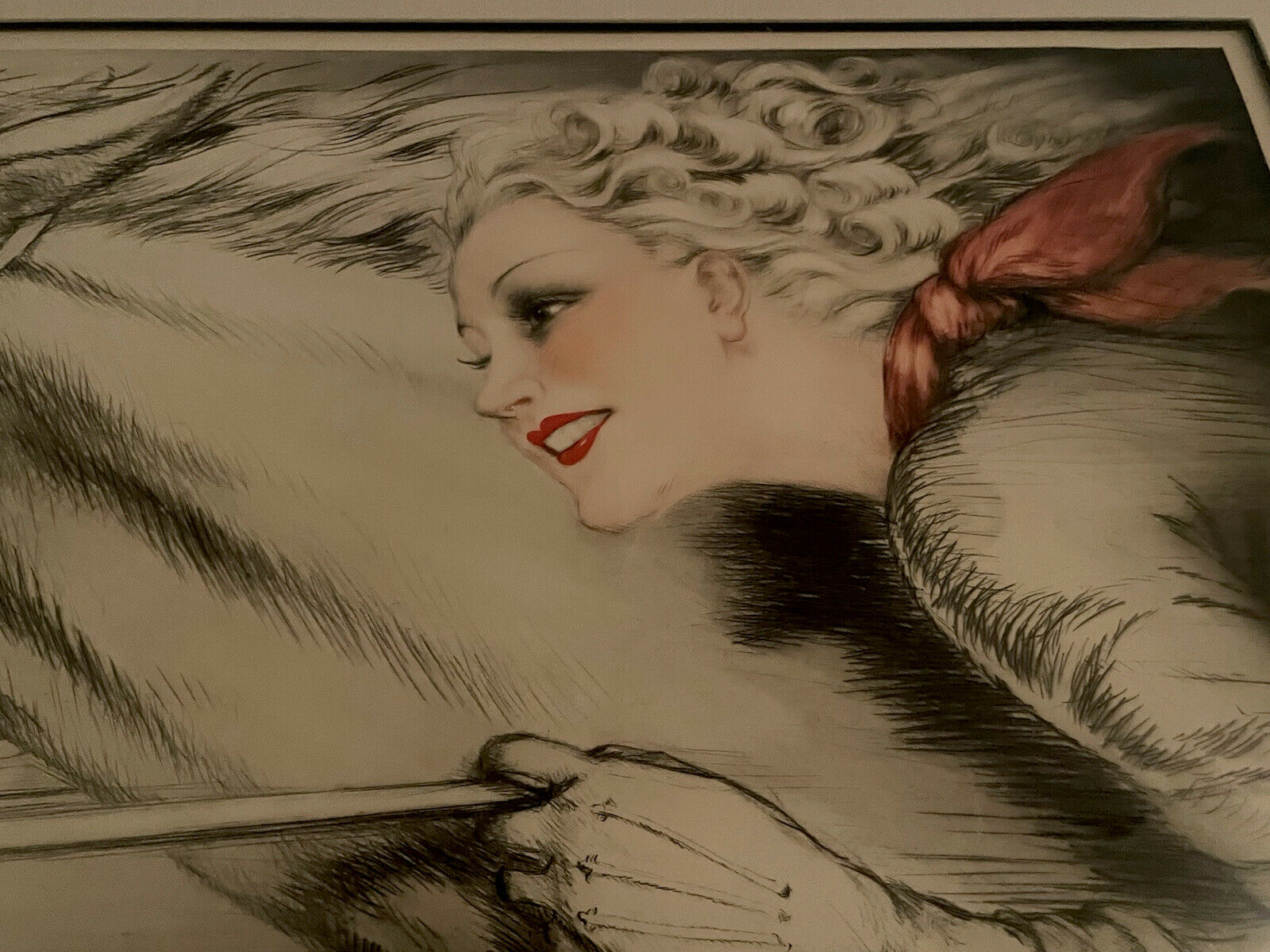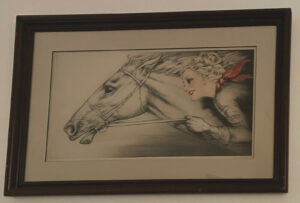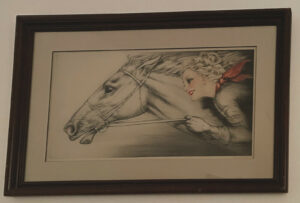Louis Icart / Pur-Sang (Thoroughbreds) 1938
$22,500.00
Louis Icart (French 1888-1950) “Thoroughbreds,” or “Pur-Sang,” 1938, etching, drypoint and aquatint, with handcoloring, signed in pencil,lower left, matted and framed. Dimensions: 17.75 x 34 in. 32 x 49 in. as framed.
Dimensions: 49 x 32 in
Louis Icart (French, 1888–1950) is considered to be a symbol of the Art Deco movement through his brilliant sketches and prints. He was born in Toulouse, France, as the first child of Jean and Elisabeth Icart. His interest in art began at an early age; he was particularly drawn to fashion sketches and designs. This was a time when the fashion industry was undergoing a revolution from the conservative 19th-century designs to the clingy simplicity of the early 20th century. Icart worked in major fashion studios where his L.I. initials on women’s clothing were highly regarded. He continued to sketch on every available surface while fighting in the First World War to ward off the anguish and agony of the war. He moved to Paris after the war to concentrate on painting and produced beautiful etchings. Icart’s prints were aquatints and drypoints elaborately done with great skill. They portrayed women in sensual, erotic poses with an implication of direct sexuality.
By the 1920s, the Art Deco movement had gained great popularity in Paris, France. Icart’s etchings and paintings, though largely influenced by Impressionists such as Claude Monet, were synonymous with the Art Deco era. His drawings also reflect the brilliance of Symbolists such as Gustave Moreau. However, Icart preferred not to be identified with artistic movements. Icart’s success financially and artistically came in the late 1920s.
His work was featured in fashion publications and design studios in Europe and the United States. His immensely popular images, which were considered phenomenal by 1925, included Laziness and Spilled Milk. His work has been exhibited in shows such as Paresse at RoGallery in Long Island, NY, and the Le Cachet in Binningen, Switzerland. His paintings are also featured at the Modern and Contemporary gallery in Fort Myers, FL. Hand-signed colored engravings by Icart can also be found at the Fine Arts Gallery Alte Kunste in Vienna, Austria, and at Zygman Voss Gallery in Chicago, IL. Icart died on December 20, 1950, at his home in Montmartre, France.
1888
Born in Toulouse, France
1950
Died in Paris, France
His etchings epitomize the depiction of women during the art deco period.
He created in excess of 500 etchings using a combination techniques including
etchings and dry point with hand coloring as characterized in the book
“Buying Works by Icart.” He created full sized etchings, erotic illustrated books,
beautiful pastel enhanced lithographs, menu covers, posters, postcards, advertising
prints, and oils on canvas.




























